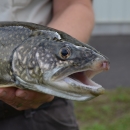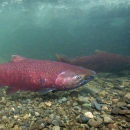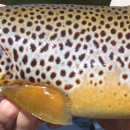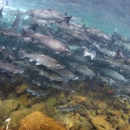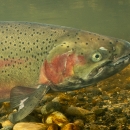The recreational fishery for salmonine species in Lake Michigan (lake trout, Chinook salmon, coho salmon, steelhead, and brown trout) is largely maintained through stocking. Decisions about how many of each species to stock require an understanding of how to maintain a sustainable balance of predators (salmonine species) to prey (alewife) in the lake. The current models used to make these decisions can estimate the ratio of Chinook salmon to alewife in the lake. However, the Lake Michigan Committee’s new stocking strategy aims to incorporate the other salmonine species into this predator-prey ratio. We used structured decision making to evaluate potential stocking strategies. We worked with fishery stakeholders and members of the Lake Michigan Committee, conducted participatory modeling to forecast outcomes of stocking scenarios using updated information on fish movement and feeding, and evaluated the risk of these stocking strategies. Most of the stocking practices we evaluated resulted in a high risk of large declines in alewife abundance, negatively affecting future salmon fisheries. The forecasts were substantially more pessimistic than those resulting from a similar analysis conducted a decade earlier, apparently due to more recent alewife assessments indicating lower alewife productivity (recruits per spawner). Alewife recruitment dynamics is an area of substantial uncertainty, with apparently large consequences for management; decision makers on Lake Michigan would benefit from greater understanding of alewife recruitment dynamics to reduce this uncertainty when accounting for risks.
Publication date
Type of document
Report
Species
FWS Focus
FWS Focus
FWS Focus
FWS Focus
FWS Focus

